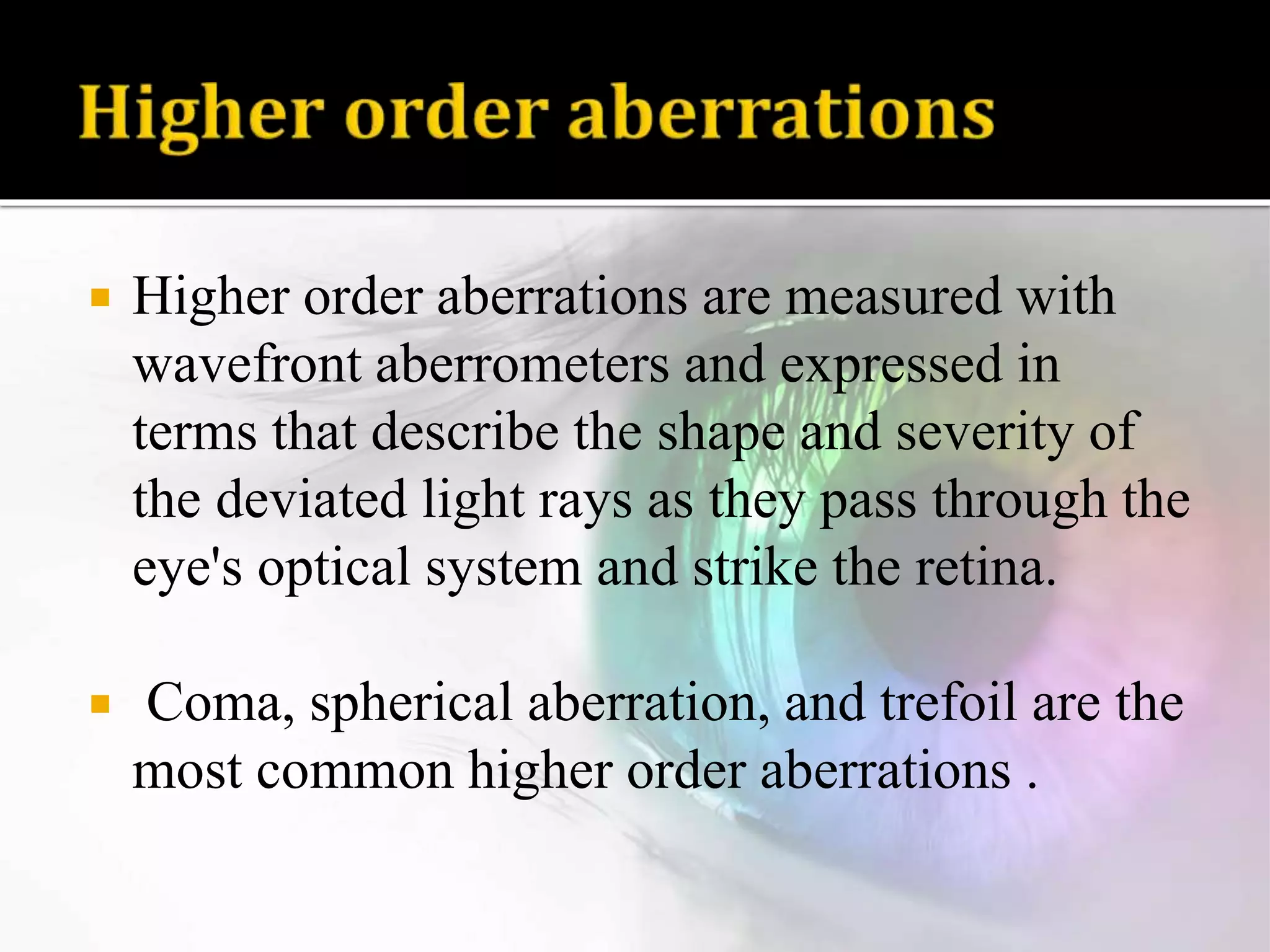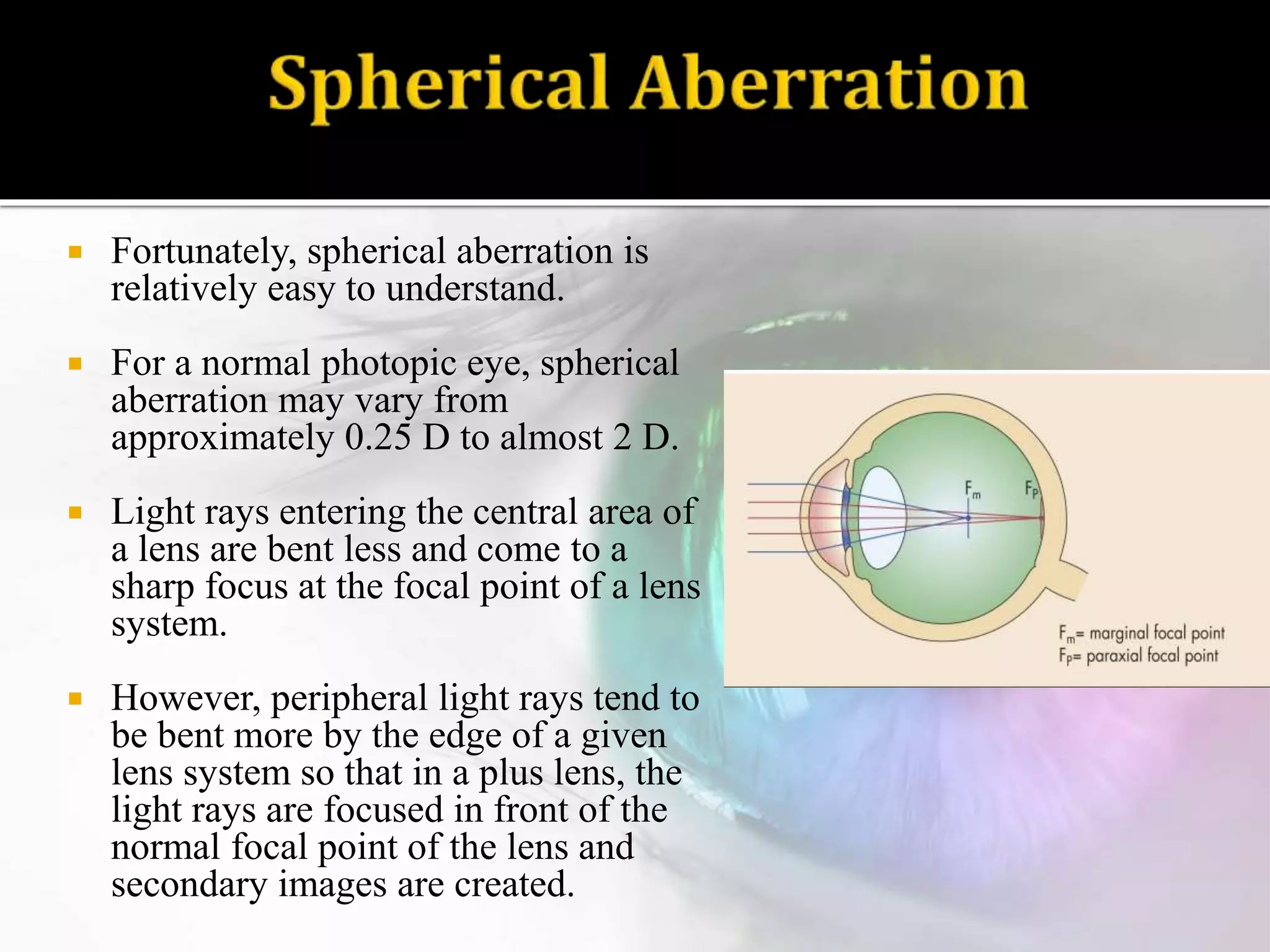The document discusses various types of optical aberrations that can occur in the eye. It describes monochromatic aberrations, which are caused by the geometry of the lens, and chromatic aberrations, which are caused by dispersion and the variation of the lens refractive index with wavelength. It also discusses how wavefront aberrometry can be used to measure aberrations by analyzing the distortion of reflected light to generate a map of the optical system of the eye. Common higher-order aberrations measured include coma, spherical aberration, and trefoil.


























